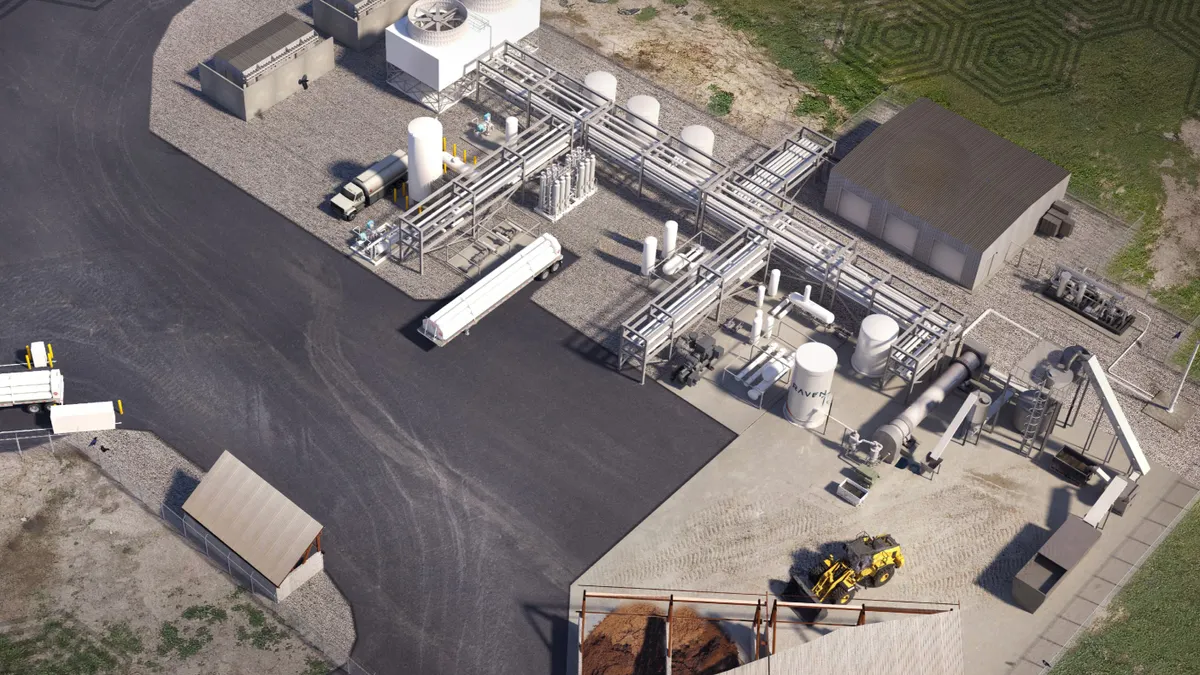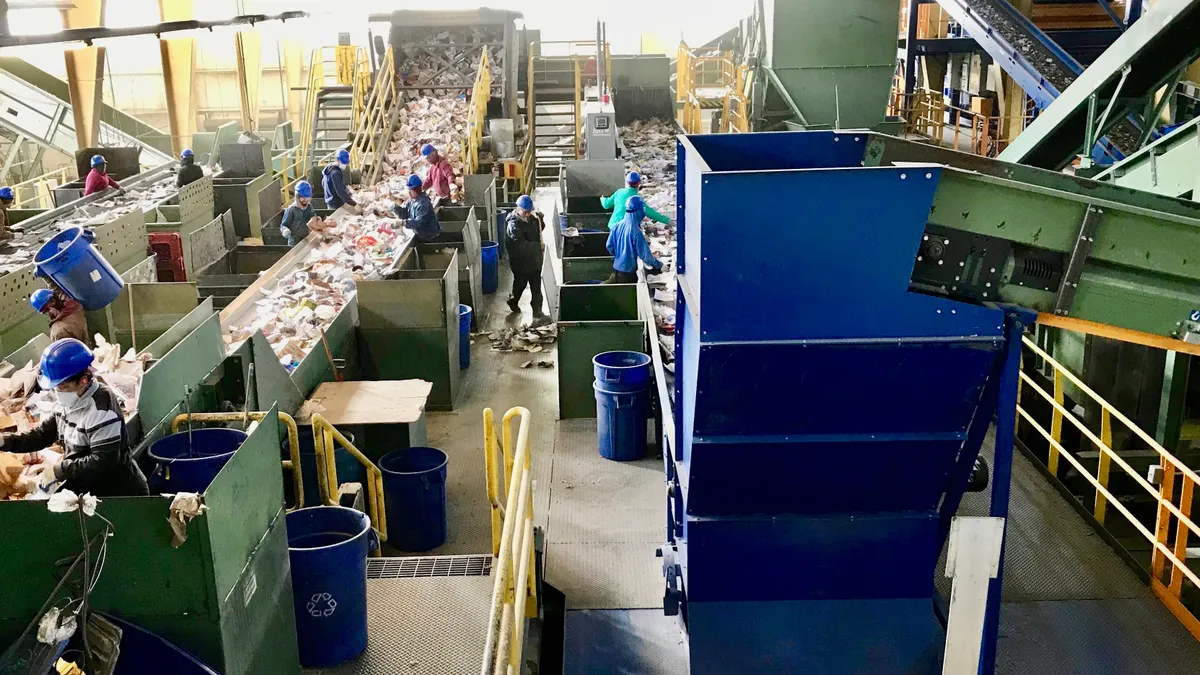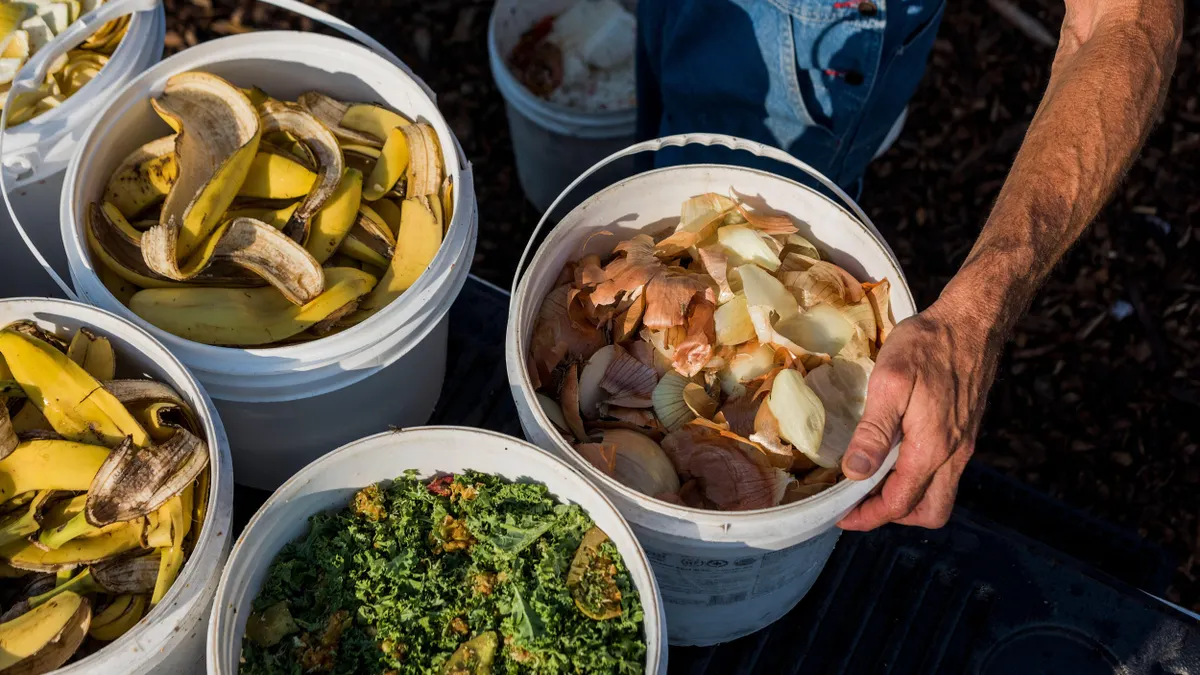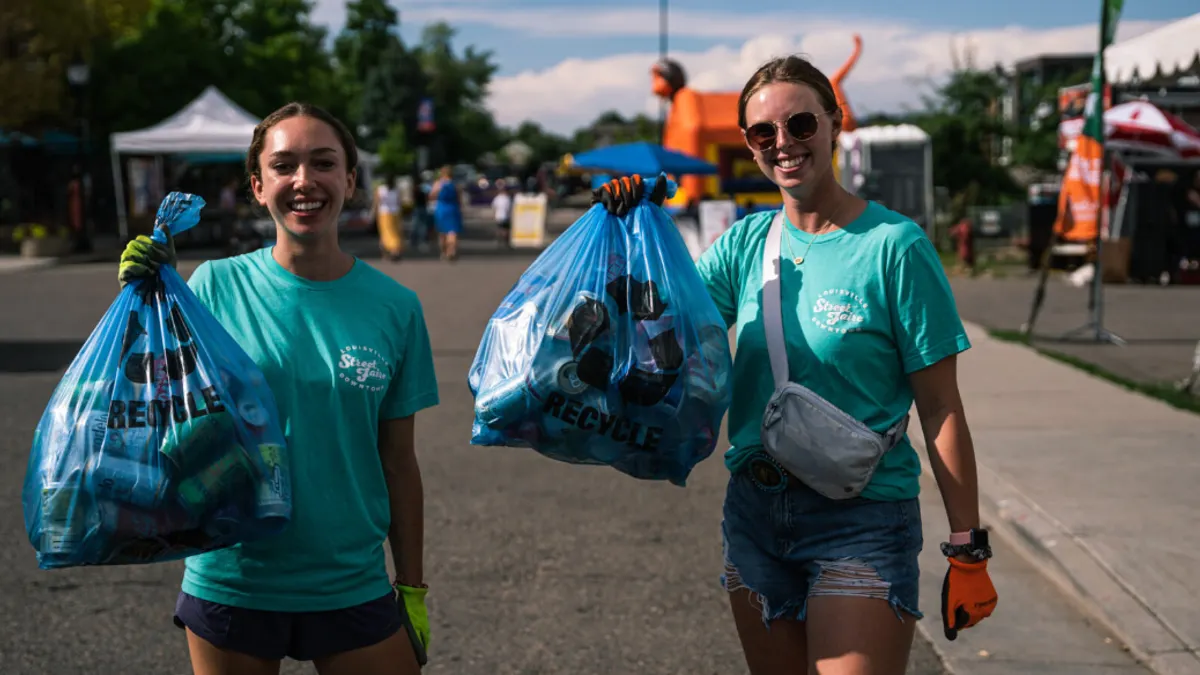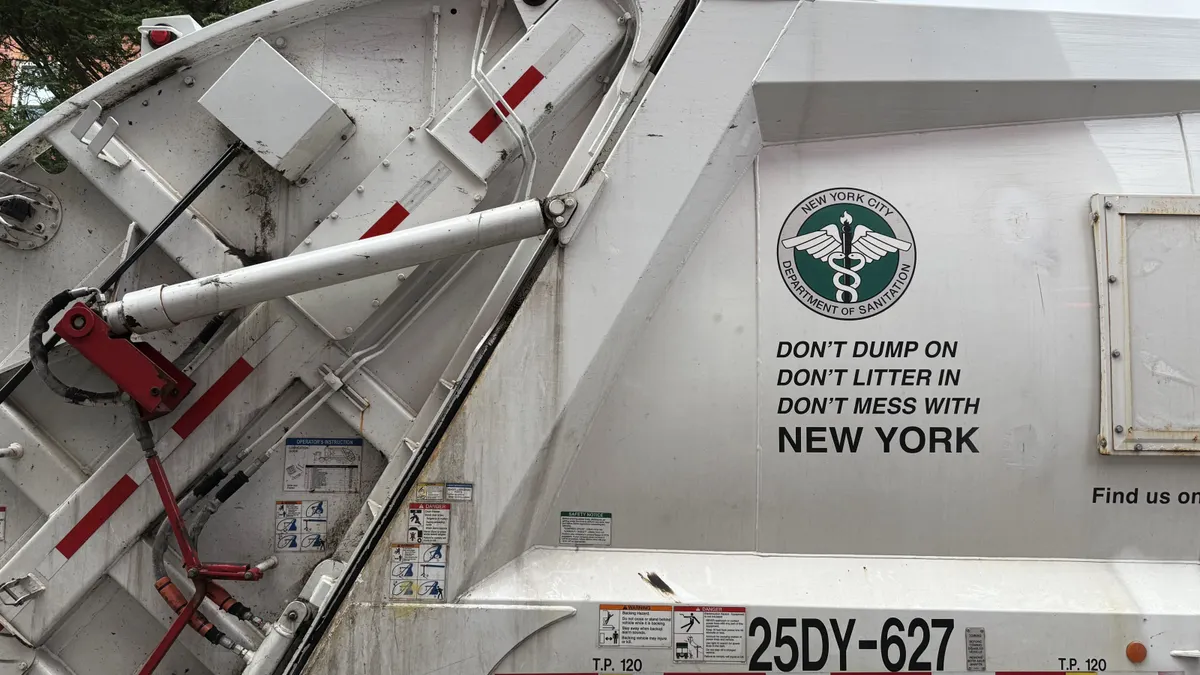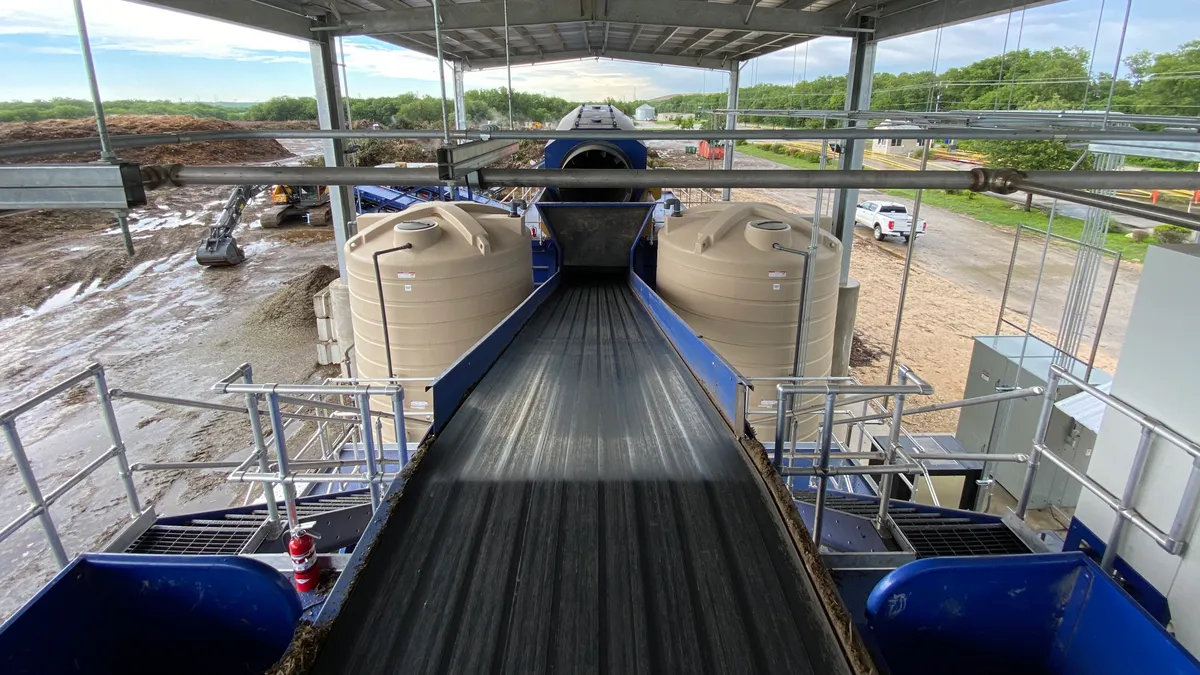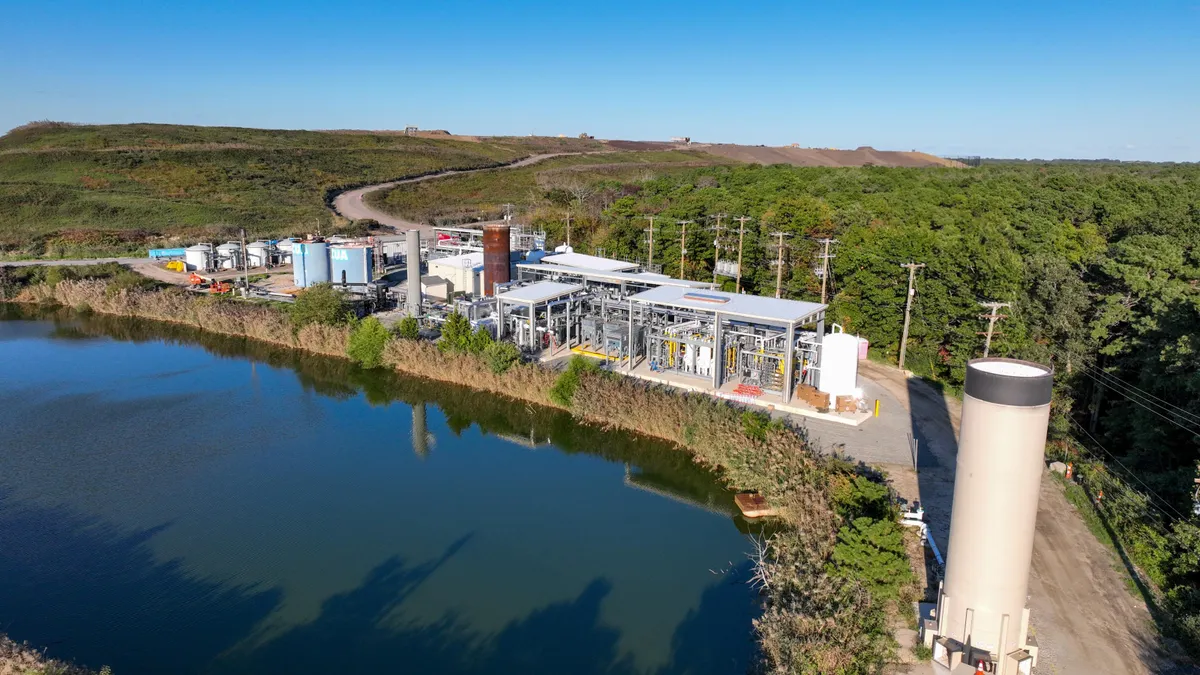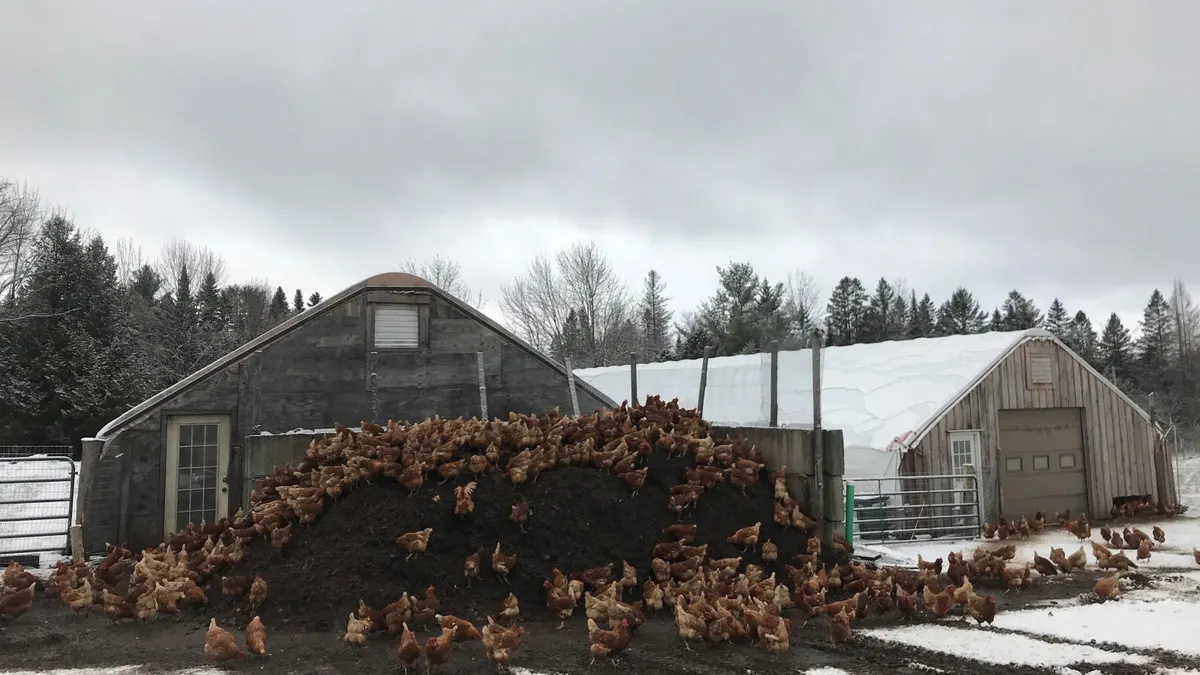One special piece of equipment may be handling less material amid the high-volume bustle of Republic Services' large waste and recycling operation in Anaheim, California, but it's still seen as equally important for the company's local operations. Slowly but surely, this unit is helping make California's food waste recycling quest a reality.
The Mega Thor Turbo Separator is capable of processing up to 20 tons of source-separated organic waste per hour. Taking up a relatively small footprint on the tip floor, the unit sends material through a horizontal process, relying on a rotating set of hammer-like paddles that press and push it through screens. An estimated 5-10% of all incoming loads is contamination, so bags, utensils and more get shot out into a container for eventual disposal. The final product from this whole operation, which comes out with an oatmeal consistency, is compost-ready.
Operating since the summer of 2018 with ongoing calibration to test out volume, speed, water injection (only if needed) and other factors, the unit is permitted to take up to 250 tons per day. While it's only been seeing about 20-30 tons per day so far, that's sure to change.
"It is a very emerging business," said Chris Seney, Republic's director of organics operations since 2018, citing anticipation of more material to come from regulations such as AB 1826 and SB 1383. "That’s really the driver of this project."
AB 1826, which took effect earlier this year, requires any commercial business that generates 4 cubic yards or more of organics per week in California to arrange for recycling. SB 1383, which is still in the rulemaking process, is expected to require service for even more residential and commercial generators as part of a plan to eventually reduce organic waste to landfills 75% by 2025. Enforcement of that law is scheduled to take effect in 2022.
These regulations, along with existing local programs that Republic services under contract in cities such as Los Angeles, have prompted the company to take a new level of interest in organics recycling. Republic now has a full or partial stake in 12 organics processing facilities, with a predominant focus on the West Coast. Seney's position is a first for the company.
Once processed in Anaheim, the material is taken to a composting facility about 20 miles away in Chino co-owned by Republic and Agromin. The aerated static pile facility uses negative pressure to manage emissions and is permitted for up to 275 tons of material per day — 75 of which can be food. So far, Seney is "very happy" with the quality of material coming out of the Thor unit, which has been performing well at the Agromin site to create "a completely closed loop."
The pre-processing concept has become increasingly common among a variety of service providers throughout the U.S. As more organics infrastructure projects begin to pick up steam in California, some element of this will surely be included. Waste Management also has its own series of "CORe" facilities that prepare material for co-digestion, including in California. Northeast anaerobic digestion companies such as Vanguard Renewables and Quantum BioPower are investing in more de-packaging and pre-processing capabilities as well.
While the front-end cleaning is a model to be replicated, this exact combination of technology isn't the only one Republic is considering. Asked whether the company had a preference among composting methods, or composting versus anaerobic digestion, Seney kept his options open.
"I honestly think both will be a part of the solution in the future. You're going to need both to solve the organics challenge in California," he said.
Food recovery for donation to people or animals is also an angle Republic has been pursuing for some of its larger generators in cities such as Los Angeles and Las Vegas. Still, some form of curbside collection is expected to be necessary for inedible material as interest expands around the U.S. More state and local governments — such as New York — are passing their own regulations to drive diversion, and federal attention to voluntary solutions has also continued under the Trump administration.
Even as it adapts to these changing market factors, Republic doesn't see a near-term scenario in which organics collection is financially preferable for the company (and in turn, for customers) as compared to disposal. That's especially true for residential collection.
"You'll always have customers that are interested and have a willingness to pay, it's whether or not you can put a solution together for the marketplace," said Pete Keller, vice president of recycling and sustainability, during an interview earlier this year. "[Boise, Idaho] is an example of a municipality with a willingness to pay. So that does happen. But most of the growth that we'll see in organics this year will be in places like California, Minnesota and other markets."
While the pace of organics infrastructure expansion may feel slow at times — in part because it's usually driven by the sporadic pace of regulatory decisions — California's latest moves appear to have garnered more buy-in than ever before from the waste industry's largest players.






